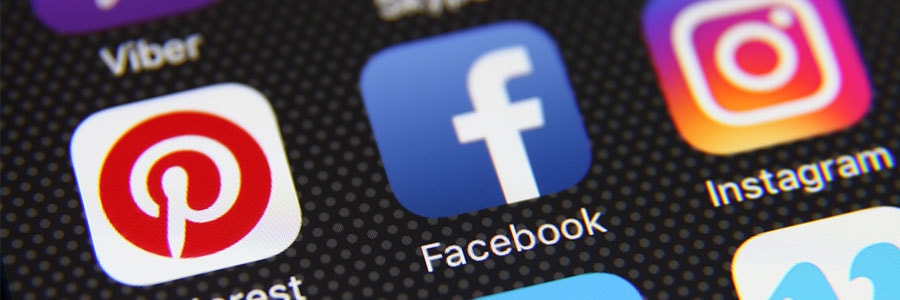Facebook is no longer the most popular social media platform for US teens. According to a recent survey by Pew Research Center, only 51% of US teens aged 13 to 17 years are using Facebook. This is much lower than the shares for US teenage Snapchat users (69%), Instagram users (72%), and YouTube users (85%).
Reasons for user demographic shift
The same survey found that only 10% of US teens use Facebook most frequently, unlike other platforms like Instagram (15%), YouTube (32%), and Snapchat (35%). There are two main reasons why Facebook is no longer the first social media choice for US teenagers: visual content and control.
#1. Visual Content
The current youth demographic group favors visually appealing posts. As a result, teens prefer platforms like Instagram and Snapchat that allow them to beautify their photos and instantly share them with their friends. This is unlike Facebook where users can only upload, share, read, and like curated posts, which is deemed “uncool” by teenagers.
#2. Control
Youngsters are known to be highly expressive, but this is impossible to do if they’re friends with their mom, dad, or other adults on social media. Snapchat and Instagram solve this by allowing teens to control who’s able to see their posts. What’s more, Snapchat and Instagram stories allow users to send time-limited messages. Unlike regular Instagram posts, Instagram stories allow users to share images or videos on their app immediately. These images and videos will then be removed from the platform after 24 hours, similar to how Snapchat works.
These two features mean users can upload more “adult-oriented” posts without worrying that their parents will see them. Users can also get peace of mind knowing their uploaded photos or videos will be removed from the app after a period of time (usually 24 hours).
The next steps for SMB marketing
It’s crucial for small- and medium-sized businesses (SMBs) that have a limited marketing budget to understand which platforms reach which demographics. For example, SMBs targeting customers aged 13 to 17 years should rethink their marketing strategies if they’ve invested mainly in Facebook ads. They should consider reallocating their advertising funds to Snapchat, Instagram, or YouTube where their target customers are most active.
Is this the end for Facebook ads?
This doesn’t mean companies that have invested in Facebook marketing won’t see any more benefits. The survey discovered that 70% of US teens from lower-income households use Facebook, a much higher figure than those from middle income families or wealthy families.
But if you do decide to move your Facebook ad spending to other platforms, keep in mind the different preferences based on gender. More girls (42%) identified Snapchat as their go-to platform compared with boys (29%). On the other hand, more boys (39%) identified YouTube as the platform they used most frequently compared with girls (25%).
It is highly recommended that businesses of any size use more than one type of marketing channel to attract customers. Not only will your company’s search engine rankings increase naturally, but having more than one approach can also help you reach more of your target demographics and compete better with similar companies. We help SMBs make the best of their marketing funds by tailoring marketing strategies that reach the most teenagers, so if you’re interested in social media marketing, send us a message today.



 Regardless of your company’s size, social media marketing is a valuable tool you can’t afford to ignore, especially if your business is brand new to the marketing world. Here are some tips you can take away to start making some noise in the social media stratosphere.
Regardless of your company’s size, social media marketing is a valuable tool you can’t afford to ignore, especially if your business is brand new to the marketing world. Here are some tips you can take away to start making some noise in the social media stratosphere.
 Before Social Media platforms like Facebook went live, HIPAA was established to protect the privacy of medical providers and their patients. And although there are no specific rules for Social Media use, every healthcare organization must implement
Before Social Media platforms like Facebook went live, HIPAA was established to protect the privacy of medical providers and their patients. And although there are no specific rules for Social Media use, every healthcare organization must implement 
 Facebook users woke up to a nightmare when they heard that the social media giant and associated app developers were selling their sensitive data to companies, like Cambridge Analytica, without their consent. So if you’re concerned about being one of the 50 million users whose data have already been sold, you should check out the following 3 tips.
Facebook users woke up to a nightmare when they heard that the social media giant and associated app developers were selling their sensitive data to companies, like Cambridge Analytica, without their consent. So if you’re concerned about being one of the 50 million users whose data have already been sold, you should check out the following 3 tips.
 Have you decided to build up your web presence and attract new customers using social media? Here are five tips on how small- and medium-sized businesses (SMBs) can turn likes into dollars.
Have you decided to build up your web presence and attract new customers using social media? Here are five tips on how small- and medium-sized businesses (SMBs) can turn likes into dollars.
 Facebook recently announced a big change to its News Feed. In response to the backlashes it has been receiving — mostly due to allegations of how
Facebook recently announced a big change to its News Feed. In response to the backlashes it has been receiving — mostly due to allegations of how 
 With the tug-of-war between mammoth social media platforms for daily users, 2018 is poised to become the biggest year for technological advancements in the industry. As social norms related to social media change, here are the top 5 trends we expect to become mainstream this year.
With the tug-of-war between mammoth social media platforms for daily users, 2018 is poised to become the biggest year for technological advancements in the industry. As social norms related to social media change, here are the top 5 trends we expect to become mainstream this year.
 With over 1.3 billion monthly active users, Facebook’s Messenger app is an unprecedented success. Facebook is now looking to fully utilize the potential of this monster user base and has therefore added a feature for improving connectivity between local businesses and consumers. Read on to learn how this feature could benefit you!
With over 1.3 billion monthly active users, Facebook’s Messenger app is an unprecedented success. Facebook is now looking to fully utilize the potential of this monster user base and has therefore added a feature for improving connectivity between local businesses and consumers. Read on to learn how this feature could benefit you!
 Strategies for attracting new customers are always changing, and Google is shaking things up yet again. Apart from well-placed keywords and link-worthy content, reviews from sites like Facebook and Yelp will be displayed in the search results.
Strategies for attracting new customers are always changing, and Google is shaking things up yet again. Apart from well-placed keywords and link-worthy content, reviews from sites like Facebook and Yelp will be displayed in the search results.
 Facebook’s not only for posting cat photos, complaining about restaurants, or stalking your ex, it’s also an incredibly effective advertising platform. From small businesses to big corporations, anyone can benefit from Facebook’s marketing tools. Read on to leverage Facebook to your advantage.
Facebook’s not only for posting cat photos, complaining about restaurants, or stalking your ex, it’s also an incredibly effective advertising platform. From small businesses to big corporations, anyone can benefit from Facebook’s marketing tools. Read on to leverage Facebook to your advantage.